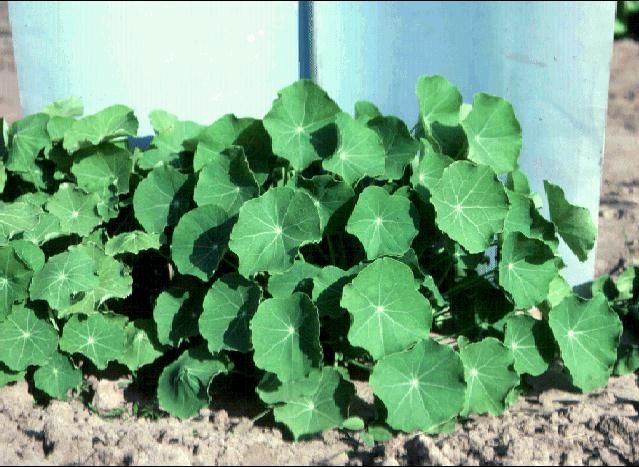Nasturtium, Garden—Tropaeolum majus L.1
Garden nasturtium is an attractive flowering plant that is commonly grown in Florida gardens as an ornamental. However, it may be included in gardens for use as a vegetable, since its leaves, flowers, and seed pods are edible. Nasturtium has other names such as Indian cress, Mexican cress, and Peruvian cress. There are two species. The most common, T. majus, is called large or tall nasturtium, and stortioner. The other is dwarf or bush nasturtium, T. minus L. These should not be confused with the genus Nasturtium, which is watercress.

Credit: James M. Stephens
Nasturtiums originated in South America and are grown worldwide. They do very well in Florida as a spring, summer, and fall annual.
Description
The plant is a succulent, climbing annual. Each round smooth pea-green leaf is attached at its center to a slender round petiole. Leaves range from 2 to 5 inches in diameter. It produces numerous five-petaled yellow, orange, and red flowers. These develop into round, ridged seed pods that are about 1/3-inch in diameter.
Use
The leaves are peppery flavored like watercress and are used in salads and as a garnish. Likewise, the colorful flowers are used for the same purposes. The green pods are made into pickles, which are equal to or superior to pickled capers.
Culture
Nasturtiums are easy to grow. Plant the seeds from spring through fall throughout Florida, year-round in South Florida. Sow the seeds about ½ to 1 inch deep, spaced 2 to 3 inches apart. When plants of the tall type are about 7 inches tall, place a stake or trellis near them for support. It is not necessary to stake or trellis the dwarf type. The plants respond to the same general cultural practices used for most garden vegetables. There are few pests to bother the plants. Pods develop about 4 months after seeding.


